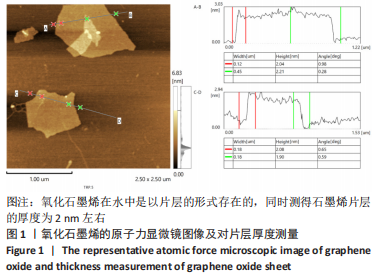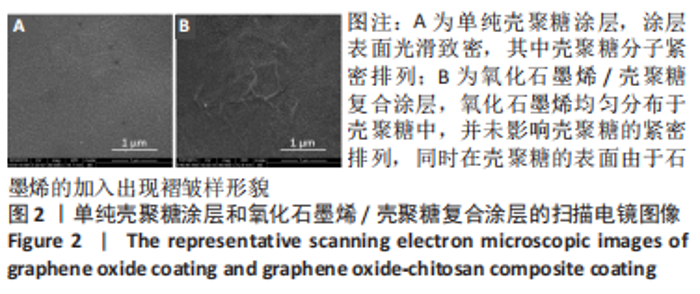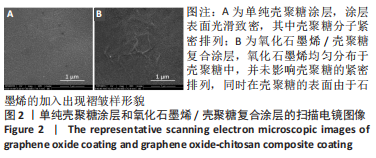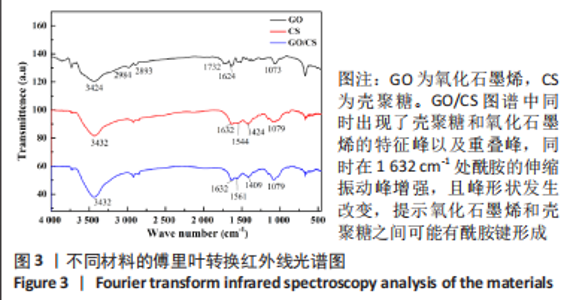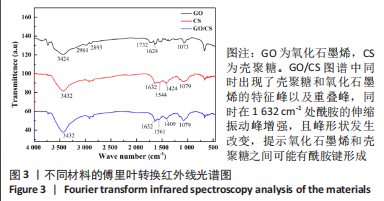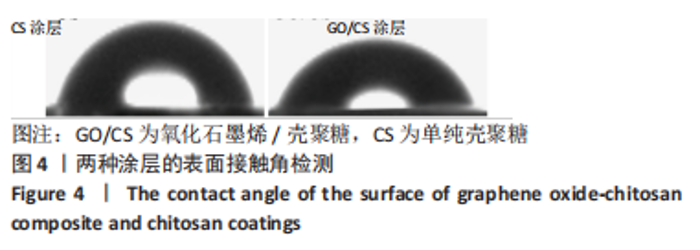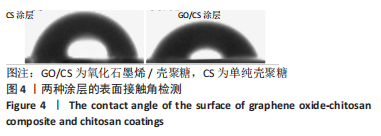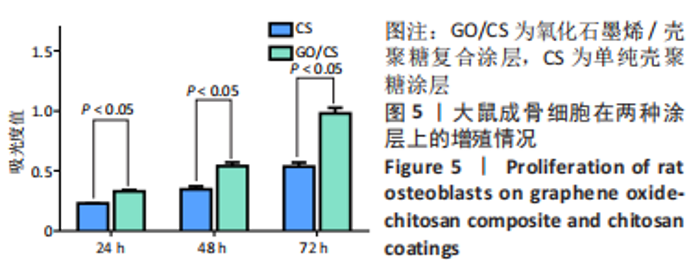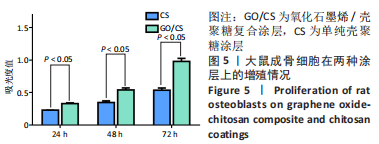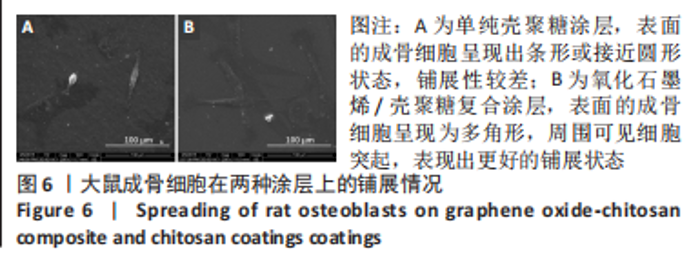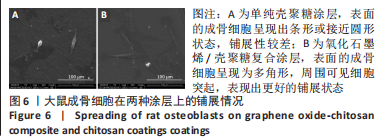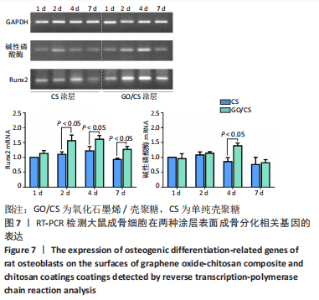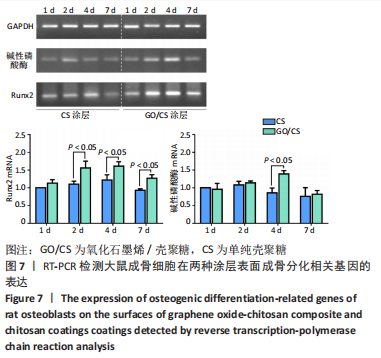[1] NOVOSELOV KS, GEIM AK, MOROZOV SV, et al. Electric field effect in atomically thin carbon films. Science. 2004;306(5696):666-669.
[2] NOVOSELOV KS, JIANG D, SCHEDIN F, et al. Two-dimensional atomic crystals. Proc Natl Acad Sci U S A. 2005;102(30):10451-10453.
[3] JIRICKOVA A, JANKOVSKY O, SOFER Z, et al. Synthesis and Applications of Graphene Oxide. Materials (Basel). 2022;15(3):920.
[4] JOUIBARY YM, REZVANPOUR A, AKBARI B. Fabrication of polycaprolactone/collagen scaffolds reinforced by graphene oxide for tissue engineering applications. Mater Lett. 2022;322.
[5] LI Q, YAN Y, GAO H. Improving the corrosion resistance and osteogenic differentiation of ZK60 magnesium alloys by hydroxyapatite/graphene/graphene oxide composite coating. Ceram Int. 2022;48(11):16131-16141.
[6] RAWAT S, JAIN KG, GUPTA D, et al. Graphene nanofiber composites for enhanced neuronal differentiation of human mesenchymal stem cells. Nanomedicine. 2021;16(22):1963-1982.
[7] TAO B, ZHAO W, LIN C, et al. Surface modification of titanium implants by ZIF-8@Levo/LBL coating for inhibition of bacterial-associated infection and enhancement of in vivo osseointegration. Chem Eng J. 2020;390:124621.
[8] YANG Z, XI Y, BAI J, et al. Covalent grafting of hyperbranched poly-L-lysine on Ti-based implants achieves dual functions of antibacteria and promoted osteointegration in vivo. Biomaterials. 2021;269:120534.
[9] FRANK LA, ONZI GR, MORAWSKI AS, et al. Chitosan as a coating material for nanoparticles intended for biomedical applications. React Funct Polym. 2020;147:104459.
[10] GARCIA-CABEZON C, GODINHO V, SALVO-COMINO C, et al. Improved Corrosion Behavior and Biocompatibility of Porous Titanium Samples Coated with Bioactive Chitosan-Based Nanocomposites. Materials (Basel). 2021;14(21):6322.
[11] HUNGE YM, YADAV AA, DHODAMANI AG, et al. Enhanced photocatalytic performance of ultrasound treated GO/TiO2 composite for photocatalytic degradation of salicylic acid under sunlight illumination. Ultrason Sonochem. 2020;61:104849.
[12] YU J, LIN M, TAN Q, et al. High-value utilization of graphite electrodes in spent lithium-ion batteries: From 3D waste graphite to 2D graphene oxide. J Hazard Mater. 2021;401:123715.
[13] MARTIN HJ, SCHULZ KH, BUMGARDNER JD, et al. XPS study on the use of 3-aminopropyltriethoxysilane to bond chitosan to a titanium surface. Langmuir. 2007;23(12):6645-6651.
[14] VILLEGAS M, ZHANG Y, BADV M, et al. Enhancing osseointegration and mitigating bacterial biofilms on medical-grade titanium with chitosan-conjugated liquid-infused coatings. Sci Rep. 2022;12(1):5380.
[15] ZHONG M, DAI X, XIANG H, et al. Preparation, Characterization, and Terahertz Spectroscopy Characteristics of Reduced Graphene Oxide-Doped Epoxy Resin Coating. Coatings. 2021;11(12). doi.org/10.3390/coatings11121503
[16] CHEN S, LI Q, HE D, et al. Aggregation behavior of partially contacted graphene sheets in six-carbon alkanes: all-atom molecular dynamics simulation. J Mol Model. 2022;28(6):149.
[17] SU L, SUN J, DING F, et al. Molecular insight into the reversible dispersion and aggregation of graphene utilizing photo-responsive surfactants. Appl Surf Sci. 2021;567:150840.
[18] TANG H, ZHANG S, HUANG T, et al. Mechanisms of the Aggregation of Graphene Oxide at High pH: Roles of Oxidation Debris and Metal Adsorption. Environ Sci Technol. 2021;55(21):14639-14648.
[19] PINELLI F, NESPOLI T, ROSSI F. Graphene Oxide-Chitosan Aerogels: Synthesis, Characterization, and Use as Adsorbent Material for Water Contaminants. Gels. 2021;7(4):149.
[20] YANG F, YUAN B, WANG Y, et al. Graphene oxide/chitosan nano-coating with ultrafast fire-alarm response and flame-retardant property. Polym Adv Technol. 2022;33(3):795-806.
[21] JUNG I, VAUPEL M, PELTON M, et al. Characterization of Thermally Reduced Graphene Oxide by Imaging Ellipsometry. J Phys Chem C. 2008;112(23):8499-8506.
[22] ZHENG J, DI CA, LIU Y, et al. High quality graphene with large flakes exfoliated by oleyl amine. Chem Commun. 2010;46(31):5728-5730.
[23] LI J, YAO Y, WANG Y, et al. Modulation of the Crosstalk between Schwann Cells and Macrophages for Nerve Regeneration: A Therapeutic Strategy Based on a Multifunctional Tetrahedral Framework Nucleic Acids System. Adv Mater. 2022;e2202513. doi: 10.1002/adma.202202513.
[24] TANG X, LI Q, LI L, et al. Expression of Talin-1 in endometriosis and its possible role in pathogenesis. Reprod Biol Endocrinol. 2021;19(1):42.
[25] MACDONALD AF, TROTTER RD, GRIFFIN CD, et al. Genetic profiling of human bone marrow and adipose tissue-derived mesenchymal stem cells reveals differences in osteogenic signaling mediated by graphene. J Nanobiotechnol. 2021;19(1):285.
[26] NEWBY SD, MASI T, GRIFFIN CD, et al. Functionalized Graphene Nanoparticles Induce Human Mesenchymal Stem Cells to Express Distinct Extracellular Matrix Proteins Mediating Osteogenesis. Int J Nanomed. 2020;15:2501-2513.
[27] EIVAZZADEH-KEIHAN R, MALEKI A, DE LA GUARDIA M, et al. Carbon based nanomaterials for tissue engineering of bone: Building new bone on small black scaffolds: A review. J Adv Res. 2019;18:185-201.
[28] LI H, HUANG J, WANG Y, et al. Nanoscale Modification of Titanium Implants Improves Behaviors of Bone Mesenchymal Stem Cells and Osteogenesis In Vivo. Oxid Med Cell Longevity. 2022;2022:2235335.
|

